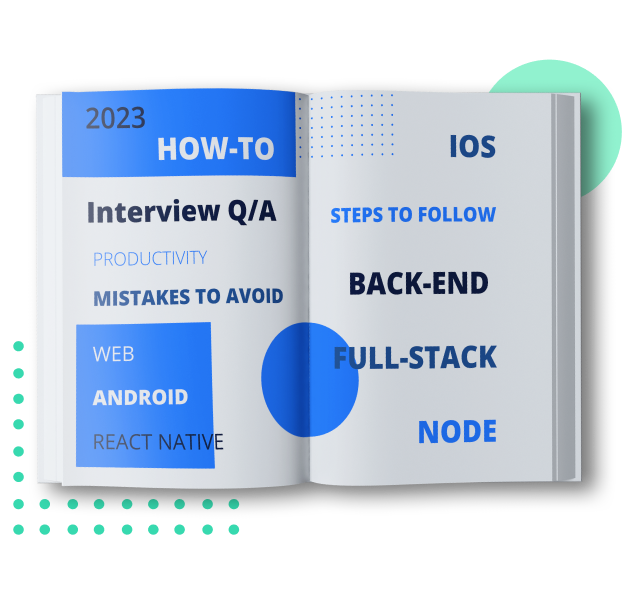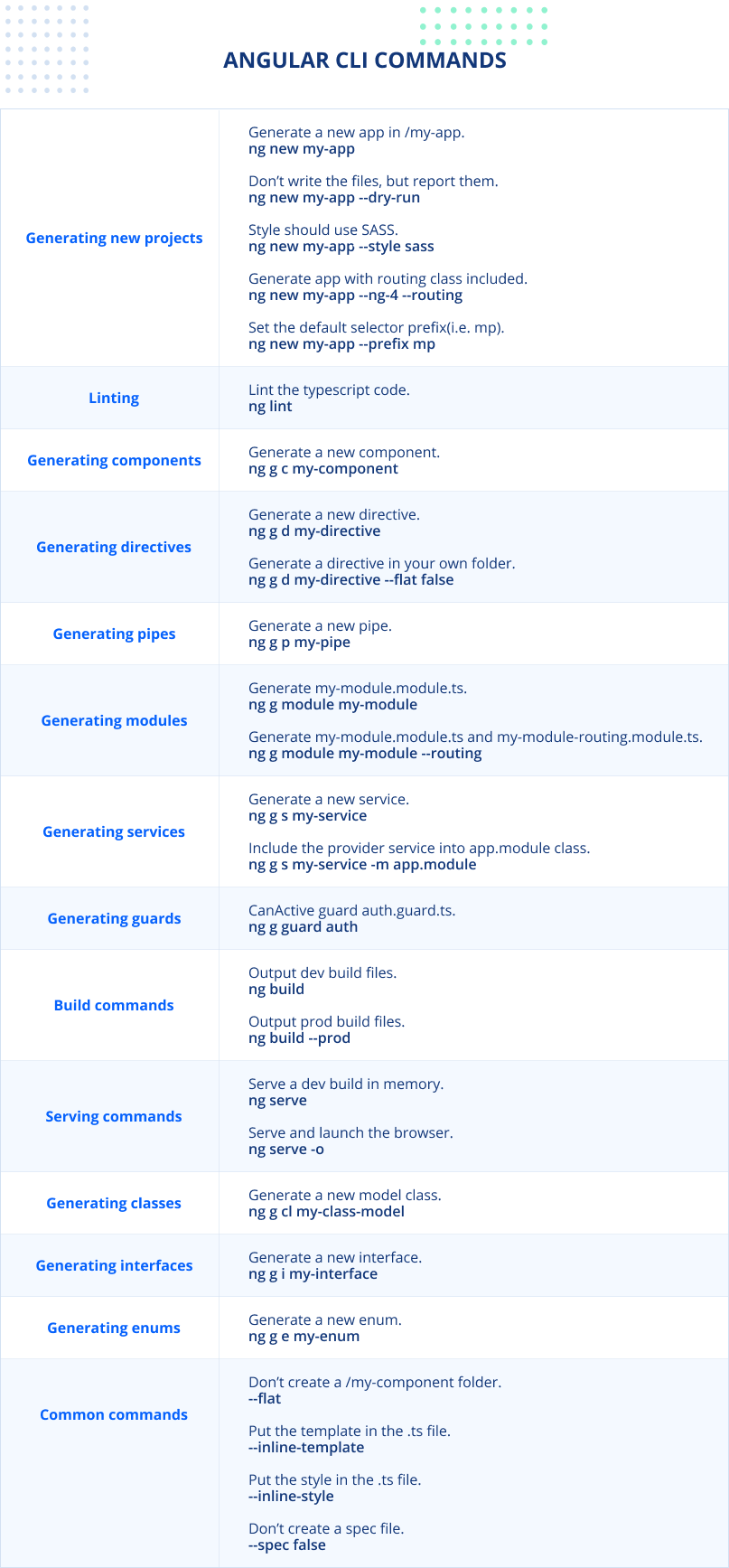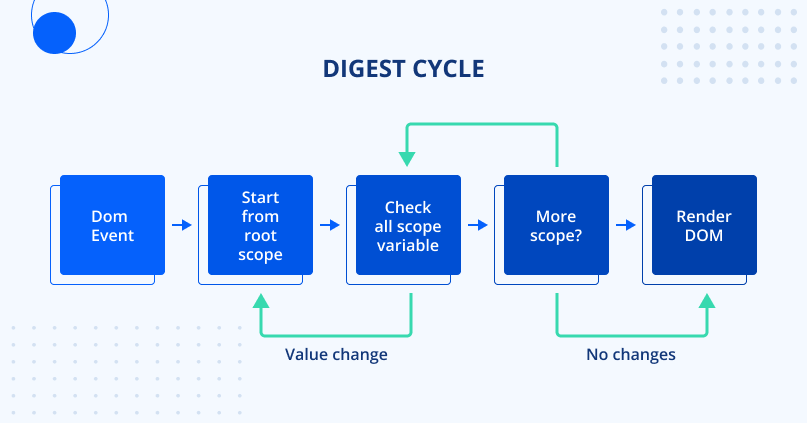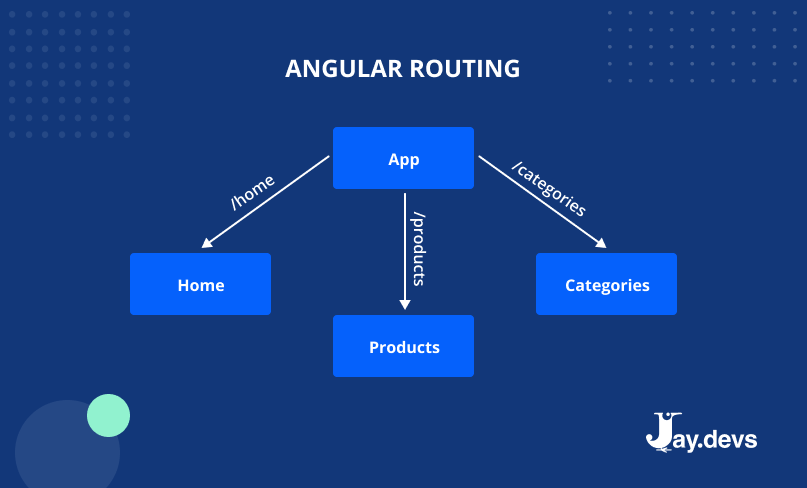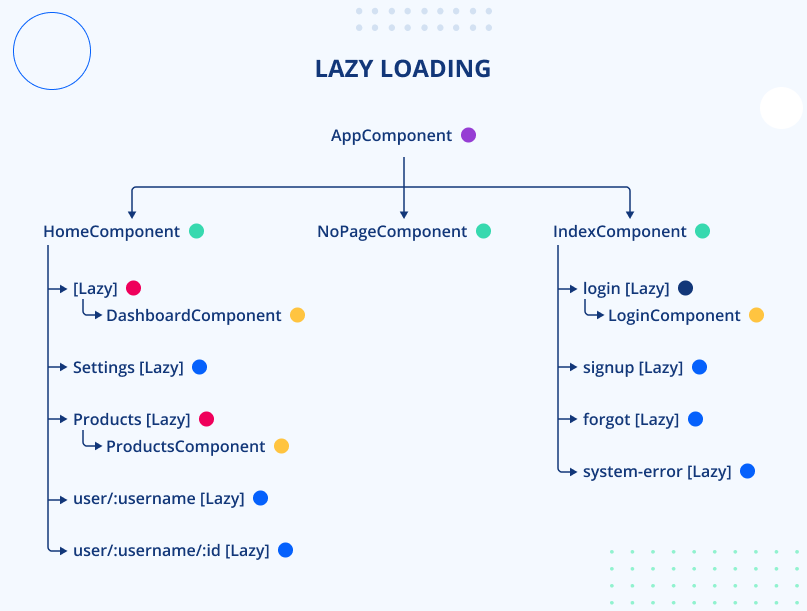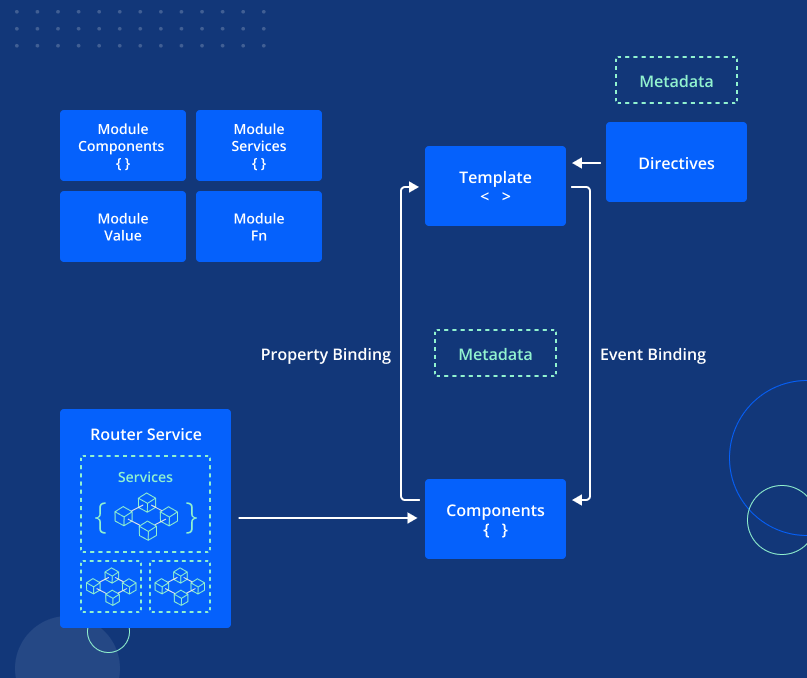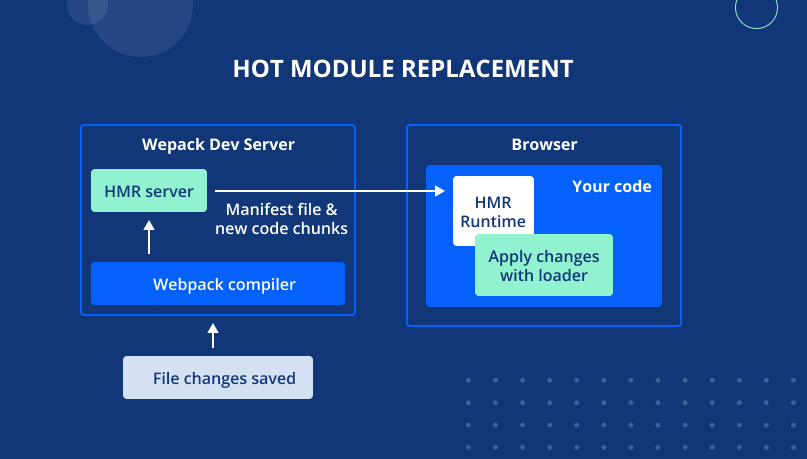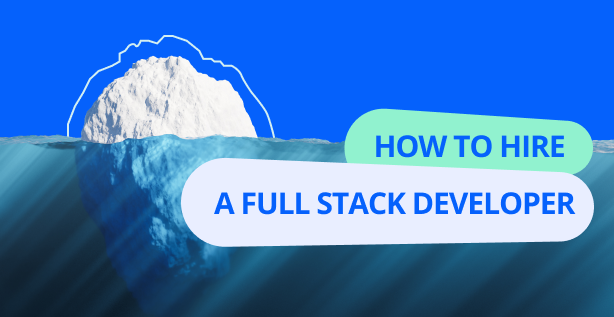If you are an IT executive, manager, or CEO considering hiring an Angular developer, then it is essential to understand the right interview questions to ask. This ensures you can hire an Angular developer that is perfect for your organization’s needs. Below are the top Angular interview questions (and answers) for 2024.
- 1. Examples of Basic Angular Interview Questions and Answers
- 2. Profile-Specific Interview Questions on Angular Framework
- 3. Coding Angular Interview Questions Examples
- 4. Advanced Angular Interview Questions Examples
- 5. Latest Angular Interview Questions for Experienced Professionals
- Contact JayDevs to Find Your Project’s Angular Developer
Examples of Basic Angular Interview Questions and Answers
These questions ensure the Angular developer understands the basics. Perhaps of equal importance, asking these questions helps you see how well the developer can explain Angular to others who may not be as knowledgeable within the field (i.e. company executives).
What is Angular development?
Angular is a development platform and one of the most popular JavaScript frameworks. This is typically used to design larger web applications as it allows the developer to scale much more effortlessly.
This question is a great way to start the interview as it ensures the developer understands the basics of Angular and can describe it in a manner that others can understand.
What are the Different Angular Versions?
There are different versions of Angular that the developer should be able to describe. This question establishes the basics, and you can follow up with more specific questions about each version later in the interview. Notably, the developer should have a basic understanding of Angular version 1 or AngularJS to Angular 14.
What is the difference between Angular and AngularJS?
Angular uses TypeScript, and AngularJS uses JavaScript. TypeScript is a typed superset of JavaScript. This is the primary difference, but the developer should be able to go deeper into the differences and unique benefits of each.
What Purpose Do Client-Side Frameworks Like Angular Serve?
Frameworks serve as the structure or guide for the building and development of something (in this case a mobile application). In simplest terms, client-side frameworks like Angular allow for the creation of dynamic web applications.
What is a Command Line Interface?
The Angular CLI is a command line interface (hence the initials CLI) that initializes, develops, scaffolds and maintains Angular applications directly from a command shell. There are different CLI commands, that the developer should understand and have the ability to explain.
What is the Difference Between Observables and Promises?
This is another basic question, and the developer should understand the key differences. In general, observables are lazy and cancellable, deliver errors to the subscribers, and handle multiple asynchronous events over a period of time. Promises, on the other hand, deal with a single event at a time, are not lazy, are not cancellable, and push errors to child promises.
Can You Explain the Difference Between Automatic and Manual Bootstrapping?
Bootstrapping is simply the reuse of code within JavaScript and Typescript. Automatic bootstrapping is used more regularly. However, manual bootstrapping may be required if there are problems with the code. The developer should understand the process of manual bootstrapping.
What is RxJS?
This may be more of an advanced question, but it is essential that developers understand the purpose of RxJS. RxJS (Reactive Extensions for JavaScript) is a reactive programming library that uses observables to make it easier to compose asynchronous code. The ideal developer has a detailed understanding of the RxJS library and can explain it with ease.
Please Highlight the Differences Between One-Way Data Binding and Two-Way Data Binding in Angular.
Quite simply, information flows in the same direction with one-way data binding. The information flows in both directions with two-way data binding, which allows for an updated process. Most applications involve the use of both, so the developer should understand them both.
Can You Describe the Use of Custom Elements in Angular?
Custom elements serve many purposes, from defining HTML tags to creating reusable web components. They also provide a bridge between the data and logic defined in the component and standard DOM APIs within an Angular component.
What is the Difference Between Structural Directives and Attribute Directives?
Structural directives add or remove elements from the Document Object Model (DOM). Attribute directives modify the appearance of DOM elements. The developer should be able to highlight these key differences, along with explaining other types of directives as well.
Profile-Specific Interview Questions on Angular Framework
As mentioned, there are 14 different versions of the Angular framework, and they continually update. Below are questions regarding almost every version of Angular. One set of interview questions may be more applicable depending on your project needs and vision.
Angular Developer Interview Questions
AngularJS (or Angular 1) is the first version that uses JavaScript rather than TypeScript. Here are key AngularJS interview questions to ask.
What is Dependency Injection in AngularJS?
In simplest terms, a dependency injection makes a class independent of its dependencies. This allows for the creation of dependent objects rather than them being created by the consumer. This may also make the testing process easier for AngularJS (Angular 1).
How can AngularJS Functionality Help You Communicate Between Modules of an Application?
You can communicate between different components and directives in Angular. This answer should include a breakdown of directives and how they serve in communication between different modules and services.
How Can You Use e2e Testing in AngularJS Applications?
End-to-end testing (e2e testing) involves testing every component of an application to ensure it works properly. This ensures any issues with the application’s integration and flow are detected and resolved before the application’s launch.
What is Your Understanding of the Digest Cycles Process?
Developers are able to decrease digest cycle time by decreasing the number of watchers. This may involve removing unnecessary watchers and using features such as web worker, one-time Angular binding, and cache DOM. The developer may also work in batches for an optimized digest cycle process.
What are Angular Expressions?
Angular expressions or JavaScript expressions bind application data to HTML in AngularJS. They are written within double curly braces or inside of a directive. Angular expressions and JavaScript expressions are integral components of AngularJS that the developer must understand.
Angular 2 Interview Questions
What are the differences between Angular 2 and AngularJS?
The Angular developer should understand the improvements that were made with Angular 2. Here are some key benefits of Angular 2 the developer should cover:
- Written in TypeScript (no JavaScript)
- Allows for mobile support
- Uses MVVM architecture
- The syntax is easier to learn and use
- Requires additional plugins
Can You Explain Routing in Angular 2?
The developer should have an understanding of how to implement routing in Angular 2. This allows for the creation of unique URLs for the purpose of redirecting users to relevant pages.
What are Services and Their Features in Angular 2?
Services in Angular 2 are functions that allow you to perform a specific task. The developer should be able to describe the specifics of Angular 2 services. Some key features include:
- Services can return data
- They usually involve the use of a decorator
- Only a single instance of any service exists
Can You Describe Lazy Loading in Angular 2?
Lazy Loading is an Angular technique that assists with loading multiple JavaScript components at once. This is done to improve the speed of the application load time. Bundles are loaded as required as the user navigates through the application.
Angular 4 Interview Questions
Angular 4 was released in March 2017. These Angular interview questions should help you gather more information about each candidate’s knowledge to determine if they are the right developers for your project.
What are Property Binding Options? What are the Different Types?
Data binding in Angular became a crucial component in Angular 4, although it has been available since Angular 2. There are three primary types of binding options that the developer should cover with their answer. These include Event Binding, Property Binding, and Two-Way Binding.
How Do You Use TypeScript in Angular 4?
Since the entire Angular 4 framework is built on TypeScript, your interview should include a question regarding TypeScript, which is used to write the code that is then made accessible for multiple browser versions via a transpiler.
What is The Difference Between Directives and Components in Angular 4?
An Angular Directive defines a class and is used for processing purposes. An Angular Component is a type of class that interacts with UI and HTML elements. Components are also defined using a decorator. They also contain predefined templates.
Angular 5 Interview Questions
Angular 5 was released in November 2017. Here are the Angular interview questions for version 5.
What are Angular 5 Building Blocks? What are the Different Types?
Angular building blocks are simply components that are used to develop the code and application. The different types of building blocks primarily include modules, components, templates, metadata, data binding, directives, services, and dependency injection.
What is an AsyncPipe?
According to Angular, the async pipe subscribes to an Observable or Promise and returns the latest value it has emitted. This helps avoid memory leaks and change detections work effectively with the AsyncPipe. Experienced and knowledgeable Angular developers typically integrate AsyncPipe promises and observations into their code.
What are Lifecycle Hooks in Angular 5? What are Their Purposes?
Lifecycle hooks in Angular allow you to run code (or “hook into”) at a specific lifecycle. Lifecycle events are a part of a component or directive. Developers should know how to make an Angular application and have the ability to integrate lifecycle hooks within it. In total, there are 8 lifecycle hooks that trigger actions at specific points in the lifecycle.
Angular 6 Interview Questions
Angular 6 features innovative functions and offers an excellent application development experience. Here are three Angular interview questions to ask developers about version 6.
What are the Most Notable Features of Angular 6?
Angular 6 introduced notable features that were not largely present in earlier Angular versions. Notably, these features include animation support, Angular CLI, code generation, code splitting, and accessibility applications. The developer should be able to discuss these features and their significance.
What are the Advantages of Angular 6 Frameworks? Why Should I Use It Over Other Frameworks?
Side frameworks like Angular 6 offer advanced features such as state management, routing, and HTTP services. You also do not have to look for these features separately, as they are already built into the framework. Google also provides support for Angular 6. These should be some of the points mentioned in the developer’s answer.
What is the function of a just-in-time (JIT) compiler?
JIT compilers allow for compilation during the execution of program code rather than before it. This is not to be confused with AOT compilation. An AOT compiler converts your Angular HTML and TypeScript code into efficient JavaScript code during the build phase. The developer should understand the different functions of each compiler type.
Angular 7 and Angular 8 Interview Questions and Answers
Angular 7 was released in October 2018. Angular 8 then followed with its release in May of 2019. Both are popular versions used by developers.
What is the Difference Between Reactive Forms and Template-Driven Forms?
There are two types of forms available in Angular 7, which are reactive forms and template-driven forms. Reactive forms manage the state of a form at a given point in time. Whereas with template-driven forms all validations are written into the code and are more for an Angular universal approach. The developer should be able to explain these two primary form types.
The Incremental DOM Element in Angular 7 and 8 has a low memory footprint. Why is that?
DOM stands for document object model. The incremental DOM element, in particular, requires no memory to render on the server-side view (unless the DOM has changed). Subsequently, the DOM elements in Angular 7 and 8 have a low memory footprint.
What are Some of the Ways You Control AOT Compilation?
Ahead-of-time (AOT) compilation converts TypeScript into JavaScript. It is important for the developer to have methods for controlling AOT compilations for successful cross-platform application development.
In the Context of Angular 7, What is the Angular TestBed?
The Angular TestBed (ATB) is an Angular-specific testing framework. It allows developers to better test behaviors with a dependency, and Angular provides a test module that emulates an Angular @NgModule.
What is the String Interpolation in Angular 8?
The string interpolation in Angular is a one-way data binding technique (as opposed to two-way data binding). It helps with the extraction of output from a TypeScript code to the HTML template. String interpolation also adds the value of a property to a component. It also allows for a better display of data from the component to the view layer (in the form of curly braces). Curly braces are essentially the same as interpolations. They occur when you send data from an Angular component to the template using the “mustache syntax.”
Coding Angular Interview Questions Examples
These Angular technical interview questions help you learn more about each prospective developer’s coding knowledge.
What is Angular Core?
This simple question establishes the coding basics. The Angular Core defines the class infrastructure for components, view hierarchies, change detection, rendering, and event handling. It is important to have an understanding of this before beginning the coding process, regardless of the version that is used.
What is an Export Class?
An export class in TypeScript supports “export =” It can be used to specify a single object that is exported from the module (i.e. class, function, namespace, etc.). This is another basic understanding that Angular developers should have.
How Do You Output Data from Child to Parent in Angular?
The @Output() decorator in a child component or directive lets data flow from the child to the parent. The developer should understand how to share data between components and discuss how to prepare the child components so that they can emit data, bind the property in the parent component template, and use the property in the parent component class.
Advanced Angular Interview Questions Examples
These advanced Angular interview questions for senior developers are designed to separate the qualified from the highly qualified and help you narrow down your shortlist to one or two candidates.
How Do You Write Angular Unit Test Cases?
Angular unit testing involves the isolated testing of small pieces of your application’s code. This is essential to minimize bugs in the coding. Karma and Jasmine are the default tools for writing unit test cases in Angular. The developer should be able to explain their unit testing process.
Please Explain the Difference Between FlatMap and ConcatMap in Angular.
This question covers observable maps and the different types. flatMap and concatMap are two primary maps that are used for Angular. The developer may also switchMap and mergeMap as well. This is an advanced process that requires experience to be explained in full detail.
What are the Security Principles in Angular?
It is important for developers to familiarize themselves with the security principles in Angular. There are built-in Angular supports to help prevent two common HTTP vulnerabilities, cross-site request forgery (CSRF or XSRF) and cross-site script inclusion (XSSI).
Can You Explain the Purpose of Metadata in Angular Development?
According to the Angular interview questions on GitHub, metadata is used to decorate a class so that it can configure the expected behavior of the class. There are different types of decorators that the developer may explain with their answer. For experienced developers, this should be a relatively easy and straightforward question to answer.
What happens if you use a script tag inside a template?
This is a more specific question that tests the developer’s knowledge. Within JavaScript, a script tag is used to embed a client-side script. It is possible to insert script tags in TypeScript for Angular, but it may involve a different process than with JavaScript. The developer should understand the role script tags play in Angular and how to effectively use them.
How Do You Create a Custom Directive?
Custom directives in Angular extend the functionality of HTML. The custom directive essentially replaces the HTML element. The developer should have a good understanding of how to create a custom directive in all Angular versions.
Can You Integrate Business Logic into Angular?
Business logic refers to custom rules or algorithms that are responsible for the exchange of information between a database and a user interface (UI). Services in Angular are designed to provide business logic and data for different components.
What is The Purpose of ng Generate Application?
Ng Generate modifies files based on their schematic. There are many reasons why this may be necessary during the building phase of an application. Each candidate should be able to discuss the purpose of ng generate and provide examples of when it might be used.
Can You Explain How the Angular Router Works?
This is more of an advanced question as it requires more of a long-winded answer. Ideally, the developer can provide a definition of an Angular router, highlight the process for routing, and provide an example to further clarify their understanding.
How Does the Angular ng-App Directive Work?
The ng-app directives role is to tell AngularJS that the directive is the root element of the application. Keep in mind, that all AngularJS applications must have a root element. You can also only have one ng-app directive in your HTML element. If there are multiple, then the first directive is used.
Describe Angular Material from a UI Perspective.
Angular Material is a user interface module. That stems from Google’s Material, which they introduced in 2014. When used appropriately, Angular Material can speed up the process of Angular projects and keep a consistent user interface. There are many components involved with Angular Material, including but not limited to data tables, data pickers, cards, and inputs.
Latest Angular Interview Questions for Experienced Professionals
Below are some more advanced questions you should consider asking prospective developers about Angular 9 through Angular 13.
Angular 9 Interview Questions
Angular 9 was released in February 2020.
How is Constructor different from ngOnInit?
The constructor is not intended to do actual work. Instead, it is intended to only be utilized for initial class members. It can be used to set up Dependency Injection, Initialization of class fields, etc. ngOnInit from Angular Core, on the other hand, is an ideal place to write code for the Angular app. In other words, constructors are used to inject required dependencies and process input bindings so that you have everything in place for the logic in ngOnInit() method. Of course, the developer should also understand how to import components oninit as well.
Can You Explain Tree Shaking in Angular 9?
In simplest terms, tree shaking refers to a step during the build process where unused code is not included in the bundle. It typically involves the removal of unused modules from the final bundle file of the application.
What is New in Angular Ivy for Angular 9?
Angular Ivy is the fourth rewrite of Angular’s rendering engine. It makes it easier to compile components individually from one another, among other benefits that Angular provides. The developer should be able to recount the major improvements for Angular Ivy.
Angular 10 Interview Questions
Angular 10 was released in June 2020. It offers innovative features and fine-tuning of existing components. Here are several top Angular interview questions regarding Angular 10.
What is Bazel, and Why Was It Deprecated in Angular CLI for Angular 10?
Bazel is a builder for the Angular CLI (command-line interface tool) that was deprecated in version 10. This was largely due to the Angular Ivy compiler, which allowed for the use of Bazel in a more efficient manner. Most experienced Angular developers have an understanding of Bazel and the purpose for its depreciation.
Does Angular 10 Boost ngcc Performance? If so, how?
The ngcc (Angular Compatibility Compiler) upgrades node_module compiled with non-ivy ngc into an ivy-compliant format. Angular 10 boosts ngcc performance by lowering the entry point size and ensuring the basepoint computation has been created lazily.
What are the Overall Advantages of Using Angular 10?
This question is particularly important if a developer recommends Angular 10 over other versions. There are certainly advantages to choosing Angular 10 that the developer might share. For instance, they may state and discuss shorter development times, ease of testing, cross-platform development, two-way data binding, the concept of dependency injection, and scalability. It is also largely viewed as having enhanced design architecture and services.
Angular 11 Interview Questions
Angular 11 was released in November 2020. Notably, you want to ask about hot module replacement (HMR), automatic font inlining, and the use of ESLint when interviewing prospective Angular developers for your application.
How Do You Implement Hot Module Replacement (HMR) into Your Development?
Hot Module Replacement (HMR) is a tool that allows you to update code without rebuilding it entirely. The purpose of HMR is to allow for faster load times and updates. This was implemented along with Angular CLI and is a key feature of the 11th version. Subsequently, developers who work with Angular 11 should have a good understanding of HMR usage.
Please Explain Automatic Font Inlining with Angular 11.
Automatic font inlining is one of the most notable and popular features of Angular 11. Inline fonts during compilation are used and linked in the application by default with this updated feature. With this feature, Angular CLI downloads and inlines the fonts that your application is using. This can save the developer time and allow them to improve their fonts with your applications if they understand how to utilize the feature.
Why Does Angular Encourage the Use of ESLint?
ESLint is compatible with JavaScrpt and TypeScript. Keep in mind, that TypeScript (which is used by all Angular versions after version 1) is transferred into JavaScript. The use of ESLint rather than TSLint simply makes it easier to jump between the two languages.
Angular 12 and 13 Interview Questions
Lastly, Angular 12 and 13 are the newest versions. Angular 12 was released in May of 2021, and Angular 13 was released in November of the same year. Here are key Angular interview questions to ask in regard to these most recent versions.
Can You Describe the Component Test Harness for Angular 12?
This allows a test to interact with a component through an API. The developer should be able to explain the workings of a component test harness as well as when and why you would use one during the build process for an application using the Angular 12 version.
What Migrations Should Take Place for Angular 12?
Angular 12 requires TypeScript 4.0. This should migrate automatically from Angular 11. Other migrations are necessary as well. The developer should walk you through the various migrations that must take place, especially as it pertains to the ones that do not happen automatically.
What Was the Reason for The Removal of the View Engine in Angular 13?
The rendering engine (“View Engine”) was removed in Angular 13. This is one of the more substantial changes to Angular 13. The developer should be aware of this change and bonus points if they understand why it was deprecated.
Contact JayDevs to Find Your Project’s Angular Developer
This completes the list of Angular interview questions and answers for 2023. Are you considering an Angular developer for your organization’s needs? If so, then contact JayDevs today. We ensure you are able to find the right developer according to your project needs and goals.
